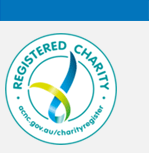Author Credentials
Authors
Ms. Diba Nikkhah Dashtizadeh
Department of Operating Room, School of Allied Medical Sciences, Iran University of Medical Sciences, Tehran, Iran
Dr. Fardin Amiri*
Assistant Professor of Nursing Education, Department of Operating Room, School of Allied Medical Sciences, Iran University of Medical Sciences, Tehran, Iran
Ms. Sedigheh Hanani
Instructor of Nursing Education, Department of Operating Room, School of Allied Medical Sciences, Iran University of Medical Sciences, Tehran, Iran
Dr. Mojgan Oshaghi
Assistant Professor of Bacteriology, Department of Laboratory Sciences, School of Allied Medical Sciences, Iran University of Medical Sciences, Tehran, Iran
Dr. Nemamali Azadi
Associate Professor of Biostatistics, Department of Biostatistics, School of Public Health, Iran University of Medical Sciences, Tehran, Iran
Corresponding author
Dr. Fardin Amiri*
Assistant Professor of Nursing Education, Department of Operating Room, School of Allied Medical Sciences, Iran University of Medical Sciences, Tehran, Iran
E-mail: amiri.fa@iums.ac.ir
Abstract
Background: Surgical site skin preparation is essential for reducing the skin’s microbial load and preventing surgical site infection (SSI). Considering the importance of determining the effect of temperature on the antimicrobial property of povidone-iodine antiseptic, this study investigated the effect of povidone-iodine antiseptic at two different temperatures on microbial load and incidence of SSI in laparotomy patients.
Method: This study was a single-blinded, randomised, controlled trial conducted from April to July 2024 at two selected hospitals in Tehran (registration number: IRCT20240212060966N1). Laparotomy patients (N = 126) were randomly assigned to the control group (secondary preparation with 10% povidone-iodine at 22°C) and the intervention group (secondary preparation with 10% povidone-iodine at 35°C). The skin preparation was done in two stages (primary and secondary preparation). Both groups received the same primary preparation (7.5% povidone-iodine). Culture samples were collected before skin preparation, after the primary preparation and after the secondary preparation. A researcher-made checklist was also used to investigate the incidence of SSIs within 24 hours and 30 days after surgery. The data was analysed using Wilcoxon signed rank test, Mann-Whitney U test and Fisher’s exact test.
Results: The microbial load after secondary skin preparation was significantly reduced in both the control (p = 0.001) and intervention (p=0.003) groups. However, there was no significant difference in microbial load before and after secondary skin preparation between the two groups (p = 0.437). The difference in SSI incidence between the two groups was not significant (p = 0.164).
Conclusion: Since there were no significant differences in microbial load and SSI between the two groups, it is recommended that povidone-iodine be used at room temperature for skin preparation.
Recommended Citation
Nikkhah Dashtizadeh, Diba; Amiri, Fardin; Hannani, Sedigheh; Oshaghi, Mojgan; and Azadi, Nemamali
(2025)
"Comparison of the effect of surgical site skin preparation with povidone-iodine antiseptic at two different temperatures on the microbial load and surgical site infection in laparotomy patients: A randomised controlled trial,"
Journal of Perioperative Nursing: Vol. 37
:
Iss.
4
, Article 6.
Available at: https://doi.org/10.26550/2209-1092.1358
CONSORT 2017 checklist
CONSORT research flow diagram.doc (33 kB)
CONSORT flow diagram
Creative Commons License

This work is licensed under a Creative Commons Attribution 4.0 License.


